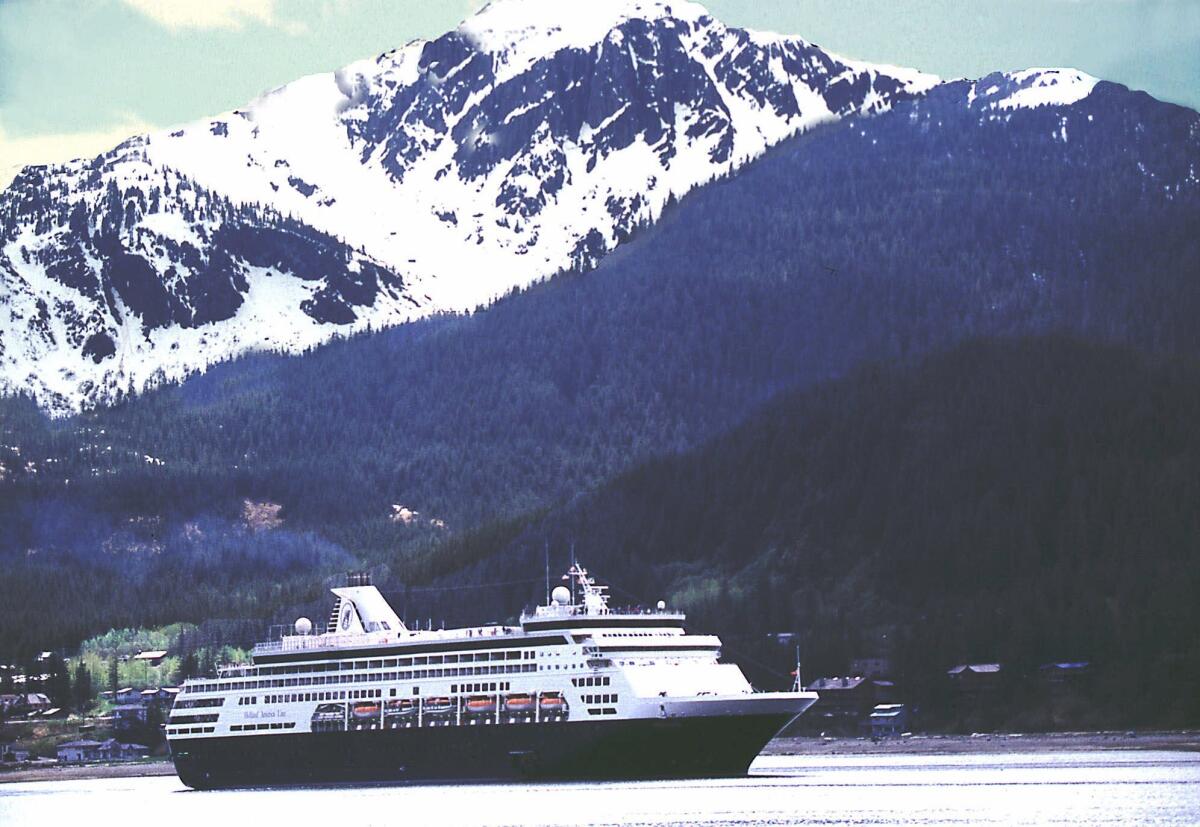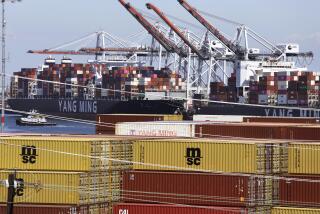Would taking these two cruises violate an 1886 U.S. law? We asked two maritime lawyers

A Holland America Line cruise ship makes its way down Gastineau Channel as it leaves Juneau, Alaska.
Question: We want to sail round trip for seven days on a cruise ship from Vancouver, Canada, that stops in Alaska, then disembark in the morning and that same day board a second cruise ship (another line) and sail from Vancouver to Los Angeles. My travel agent is apprehensive about booking two different cruises for fear this might violate laws that restrict certain voyages between foreign and U.S. ports. Where is the potential violation in this itinerary?
Robert Lerner
Valley Center
Answer: If there is a potential violation, two maritime lawyers were flummoxed about what it is.
First, some background. The law Lerner refers to is the Passenger Vessel Services Act, which dates to 1886. The act, which is often confused with its younger cousin, the Jones Act, says that passengers sailing exclusively between two U.S. ports must travel in ships built in the U.S. and owned by U.S. citizens.
Most of the cruise ships that serve leisure travelers are not built in the U.S. but in Europe and Asia, and they are not U.S. flagged.
As a result, if you’re planning an Alaska cruise, your vessel probably will make a port call in Canada, and a sea voyage to Hawaii may stop in Ensenada, Mexico. By doing so, those cruises avoid running afoul of that act.
But, you say, what about Norwegian Cruise Line’s inter-island cruises of Hawaii? Those itineraries don’t stop in foreign ports, so how can that happen? Surprise: NCL’s Pride of America is a U.S.-flagged ship that operates under a U.S. company, a rarity these days.
When you look at Lerner’s itineraries, as maritime lawyers Charles Naylor and James T. Brown have done, the trips appear to adhere to the law.
Lerner’s first voyage, a round trip from Vancouver, is not sailing between U.S. ports. The second trip starts in Vancouver and finishes in L.A. Neither is it sailing between U.S. ports.
Both lawyers were confounded.
Perhaps it is an abundance of caution by the travel agent, said Brown, a partner at Legge, Farrow, Kimmitt, McGrath & Brown in Houston.
Let’s say you are sailing on a repositioning cruise from Los Angeles to Vancouver — legal for a foreign-flagged ship — and for some reason you disembark at an intermediate stop in, say, San Francisco or Seattle. The cruise line could face a fine of $300 per passenger.
The cruise line’s contract of carriage, or terms and conditions, usually spells out such a prohibition, and in some instances, the contract notes the cruise line has the right to pass that fine along to the passenger.
How is it that this convoluted law is still on the books? “Its intent was to support American shipping,” said Naylor, whose law offices are in San Pedro. But, he added, “That’s an industry that almost doesn’t exist anymore.”
And maritime law doesn’t evolve quickly, he said. “Unlike automobile accidents, in which almost everything you can imagine would happen in an auto accident has already happened … and gone through the courts … there is lots and lots of case law,” Naylor said.
But with maritime law, “there are still lots of circumstances when everybody wonders what law applies.”
Or, in this case, wonders why it still applies in the U.S. The cruise ship construction business isn’t a going concern here, largely for economic reasons.
“If you build the same ship in a U.S. shipyard, it’s going to cost you about one and a half to two times what it would in a foreign yard,” Brown said.
Could it be the Passenger Vessel Services Act is a ship that sailed some time ago?
Have a travel dilemma? Write to travel@latimes.com. We regret we cannot answer every inquiry.
More to Read
Sign up for The Wild
We’ll help you find the best places to hike, bike and run, as well as the perfect silent spots for meditation and yoga.
You may occasionally receive promotional content from the Los Angeles Times.







